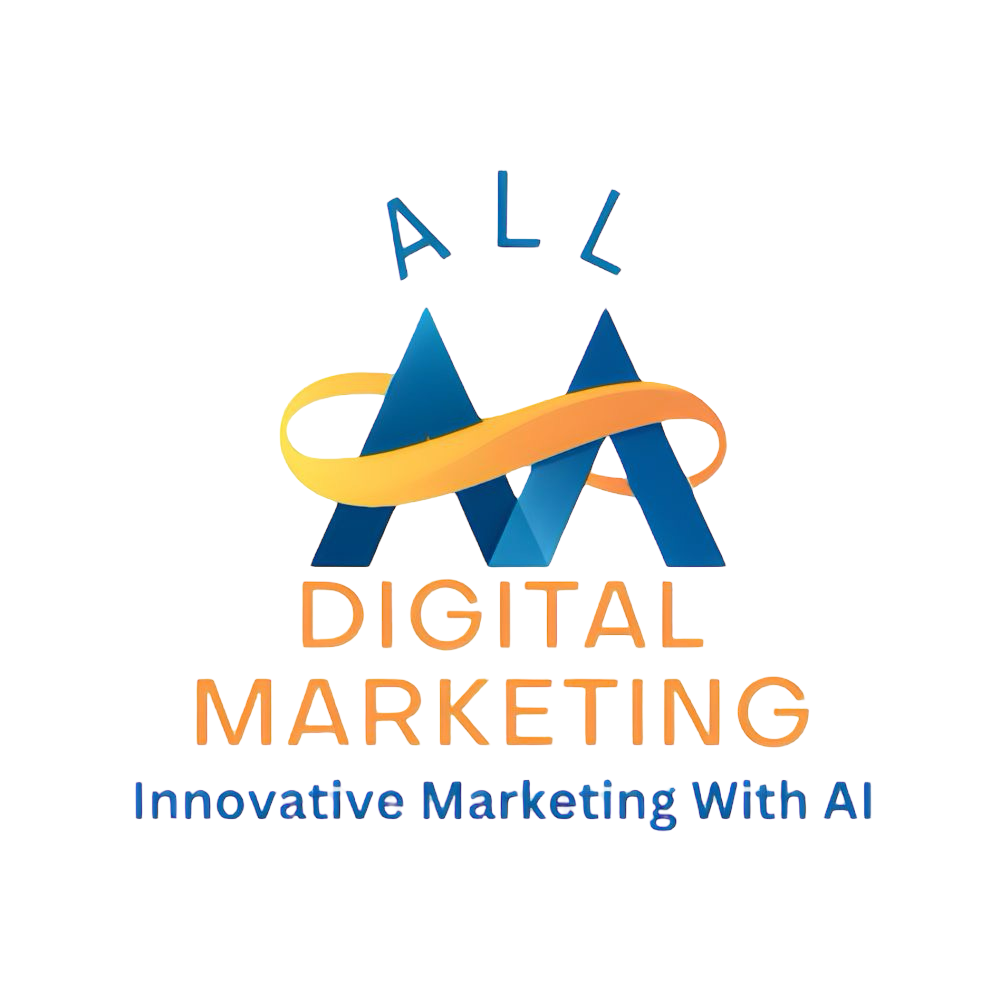In today's rapidly evolving business landscape, finding and attracting new customers is crucial for sustainable growth. With technology and consumer behavior constantly changing, businesses must adapt their outreach strategies to stay relevant and competitive. But how can you effectively generate leads and convert them into loyal customers?
To answer this question, we've consulted with industry experts and compiled a list of 14 ingenious strategies that you can implement today to find and reach new customers. Whether you're a small business owner or a marketing professional, these tactics will help you stand out from the competition and drive growth.

Key Takeaways
Hyper-specific audience targeting can dramatically improve conversion rates
Seasonal messaging and AI-powered tools enhance marketing effectiveness
Personalized retargeting and community building foster customer loyalty
Leveraging unconventional platforms and local partnerships expands reach
Offering free advice and easy payment options attracts potential buyers
1. Get Specific with Your Audience Targeting
One of the most effective ways to find new customers is by refining your audience targeting. Dhanvin Sriram, founder of Promptvibes, emphasizes the power of creating hyper-specific lookalike audiences based on your most valuable customers' behaviors.
"I've seen that creating hyper-specific lookalike audiences based on the behaviors of your most valuable customers—like repeat buyers or those with high lifetime value—can dramatically improve results," Dhanvin said. "It's all about focusing on quality over quantity to attract potential customers more likely to convert."
This approach goes beyond basic demographic targeting. For example:
Mimi Nguyen, founder of Cafely, targets small businesses
Jonathan Goldberg, CEO of ring retailer Kimberfire, focuses on life events and relationship status
Ben McInerney, certified arborist and founder of GoTreeQuotes, targets homeowners based on property size and local tree species
McInerney's hyper-targeted approach led to a remarkable 60% increase in conversion rates for premium tree care services. By combining data from various sources and creating custom attributes, you can refine your audience targeting and achieve similar results.
2. Update Messaging Throughout the Year
As seasons change, so should your marketing messages. Aligning your product or service messaging with seasonal trends can significantly boost engagement and conversions.
McInerney shares how GoTreeQuotes adapts its messaging throughout the year: "We ramp up our campaigns for spring pruning services just as the last frost is melting. By using weather data APIs to trigger specific ad campaigns, we ensure our message reaches homeowners at the exact moment they're likely thinking about tree care."
This seasonal approach resulted in a 45% increase in bookings for GoTreeQuotes. Consider how your products or services relate to different times of the year and adjust your messaging accordingly.
3. Tap into AI
Artificial Intelligence (AI) is revolutionizing the way businesses find and attract new customers. Dan Ben-Nun, CEO of Adspace, recommends using AI-powered customer profiling tools to analyze customer data and predict which leads are most likely to convert.
"AI tools such as Qlik Sense can easily analyze patterns in your existing customer base, segmenting leads based on a wide range of factors such as their purchase frequency, behavior, and engagement rate," Dan explained.
Phil Portman, CEO of Textdrip, has successfully used AI to distinguish high-intent site visitors from casual browsers. "For example, users who had engaged with certain product demos but hadn't yet signed up were automatically sent a tailored message offering a limited-time discount on their next purchase," he said. "This kind of precise targeting increased our conversion rates by 25%."
See How Digital Marketing All Can Drive More Traffic to Your Website
Brand Voice Strategy – Let our team help you create your brand voice to attract your ideal customer.
Keyword Weak Spot Report – Let our team show you where you can gain additional traffic that you are missing.
SEO - unlock more SEO traffic. See real results.
Content Marketing - our team creates epic content that will get shared, get links, and attract traffic.
Paid Media - effective paid strategies with clear ROI.
4. Learn from Your Competitors
Studying your competitors' marketing strategies can provide valuable insights into effective customer acquisition techniques. Here are some ways to learn from your competition:
Analyze their ads using tools like Facebook Ad Library or Google's Ad Transparency Center
Review their website and social media presence
Observe their positioning and messaging strategies
By understanding your competitors' tactics, you can identify gaps in the market and differentiate your own offerings.
5. Get More Personal with Retargeting
Retargeting is a powerful tool for converting potential customers who have shown interest in your products or services. McInerney shares how GoTreeQuotes implemented a personalized retargeting strategy:
"We implemented a multi-touch retargeting campaign across social media and display networks, showing different ads based on the specific services a user viewed on our site," he said. This approach increased click-through rates by 50% and boosted conversions by 35%.
Sriram also emphasizes the importance of personalized retargeting: "If someone browses certain platform features but doesn't sign up, we retarget them with ads highlighting testimonials or offering special trial incentives. It's more engaging than generic ads."
6. Look Beyond the Most Popular Sites and Services
While major social networks and websites are important, don't overlook niche platforms that cater to your target audience. Robert Benson-May, CEO of Pickle Rooms, found success using Reddit to grow his newsletter subscriber base:
"I'd post interesting stories from my past, letting people copy the things that worked for me," he said. "The stories got 474,000 views in my first two months of posting on Reddit."
Consider exploring platforms like WeChat, Snapchat, Pinterest, and LinkedIn to reach new potential customers.
7. Offer Free Advice
Demonstrating your expertise by offering free, personalized advice can be an effective way to attract new customers. Josh Qian, COO of Best Online Cabinets, shares their "Cabinet Swap" initiative:
"This one-on-one engagement draws in potential buyers and demonstrates our commitment to personalized service," he said. Customers submit photos of their kitchens and receive recommendations on which new cabinets will work best in their spaces.
You can offer advice through various channels, such as:
Forums and online communities
Blog posts and newsletters
Webinars and live Q&A sessions
8. Promote New Payment Options
Making it easy for customers to pay can significantly increase conversions. Mike Falahee, president of Marygrove Awnings, added flexible payment options for customers:
"As these payment options are highly convenient for them and others who are not our customers, we've managed to increase our customer base by more than 67%," he said.
Highlight your easy payment options in your ads and on product pages to encourage more potential customers to make a purchase.
9. Include QR Codes and URLs
Tracking customer behavior is crucial for optimizing your marketing efforts. Nicolas De Resbecq, general manager at Oppizi, recommends using QR codes and unique URLs in marketing materials:
"Businesses can gain valuable insights into campaign performance, including redemption rates, conversion metrics, and even geographic data on where their materials are being scanned or visited," he said. "This data-driven approach allows for continuous optimization, ensuring that each subsequent campaign is more precisely targeted and effective than the last."
10. Build Customer Relationships and Communities
Your existing customers can be powerful advocates for your brand. Martin Gasparian, owner of Maison Law, emphasizes the importance of cultivating personal relationships:
"To attract new customers, you need to take care of the needs and wants of your current ones," he said. By providing exceptional service, Gasparian's clients naturally became brand ambassadors, attracting new clients through word-of-mouth referrals.
Building a community around your brand can also help attract new customers. Vlad Khorkhorov, CEO of WebsitePolicies, and Phil Portman of Textdrip have both found success in creating online communities where customers can exchange tips and resources.
Josh Neuman, founder of Chummy Tees, encourages customers to share content with a branded hashtag: "During a campaign last year, we saw a 50% increase in engagement and a 20% boost in sales just by running a contest where the best photo would win a limited-edition tee," he said.
11. Ask for Referrals
Actively seeking referrals from satisfied customers can be a powerful way to attract new business. Mimi Nguyen of Cafely sends short surveys after purchases to encourage referrals:
"Especially with our loyal customers, they seem more eager to speak about our brand and our products, bringing in a more unique audience to our site," she said.
Consider offering incentives for referrals, such as discounts or special gifts, to encourage customers to spread the word about your business.
12. Partner with Local Businesses
Collaborating with businesses in related fields can help you tap into new audiences. Phil Portman of Textdrip partnered with a CRM company for a co-branded webinar:
"This partnership brought in over 500 new leads from a single event, with a conversion rate of nearly 20%," he said.
Gal Cohen, business development leader at JDM Sliding Doors, has found success partnering with home improvement contractors, real estate agents, and interior designers: "Establishing these referral relationships enables us to tap into new customer segments and builds a network of mutually beneficial connections that drive business growth," he said.
13. Send Handwritten Notes
In today's digital age, personal touches can make a big impact. Josh Neuman of Chummy Tees implemented a thank-you campaign with handwritten notes:
"We started this as an experiment, sending handwritten notes to our first 100 customers of the month," he said. "Not only did it bring a smile to their faces, but we also saw a 15% increase in repeat purchases."
These personal gestures can lead to positive word-of-mouth marketing, attracting new customers through recommendations from delighted existing customers.
14. Get Involved with Local Events
Don't overlook the power of local community engagement. Dionne Jayne Ricafort, marketing manager of CSO Yemen, has boosted her consumer base by participating in local events and workshops:
"By hosting and participating in these activities, we enhance our brand visibility and forge direct, meaningful connections with potential consumers, many of whom become loyal patrons," she said.
Josh Neuman has also found success with live events like pop-up shops: "At a recent event, we attracted over 300 visitors in just one weekend, and about 30% of them made purchases on the spot."
Frequently Asked Questions: Finding New Customers
Q1: How can I identify my target audience more effectively?
A: To identify your target audience more effectively, consider the following steps:
Analyze your current customer base to find common characteristics.
Conduct market research through surveys, interviews, and focus groups.
Use analytics tools to gather data on website visitors and social media followers.
Create detailed buyer personas based on demographics, behaviors, and needs.
Test and refine your audience segments through targeted marketing campaigns.
Q2: What are some cost-effective ways to reach new customers for a small business?
A: Small businesses can reach new customers cost-effectively through:
Optimizing their website for local SEO.
Engaging with the community on social media platforms.
Collaborating with complementary local businesses.
Offering referral incentives to existing customers.
Creating valuable content through blogs, videos, or podcasts.
Participating in local events or trade shows.
Q3: How can I measure the success of my customer acquisition efforts?
A: To measure the success of your customer acquisition efforts, track these key metrics:
Customer Acquisition Cost (CAC)
Conversion rates
Return on Ad Spend (ROAS)
Customer Lifetime Value (CLV)
Lead-to-Customer ratio
Website traffic and engagement metrics
Social media reach and engagement
Q4: What role does content marketing play in attracting new customers?
A: Content marketing is crucial for attracting new customers because it:
Establishes your brand as an industry authority.
Improves your search engine rankings, increasing organic visibility.
Provides value to potential customers, building trust and credibility.
Nurtures leads through the sales funnel.
Encourages social sharing, expanding your reach.
Supports other marketing efforts like email campaigns and social media.
Q5: How can I use AI to improve my customer acquisition strategies?
A: AI can enhance your customer acquisition strategies by:
Analyzing large datasets to identify patterns and predict customer behavior.
Personalizing marketing messages and product recommendations.
Optimizing ad targeting and bidding in real-time.
Automating customer segmentation for more precise targeting.
Improving customer service through chatbots and virtual assistants.
Enhancing lead scoring to focus on high-quality prospects.
Q6: What are some effective retargeting strategies for converting interested leads?
A: Effective retargeting strategies include:
Segmenting your audience based on their interaction with your website.
Creating personalized ads that address specific product interests.
Offering special promotions or discounts to incentivize purchases.
Using dynamic product ads to showcase items viewers have shown interest in.
Implementing frequency caps to avoid ad fatigue.
Utilizing cross-channel retargeting across social media, display ads, and email.
Q7: How can I build a strong brand voice to attract my ideal customers?
A: To build a strong brand voice that attracts ideal customers:
Define your brand's core values and mission.
Identify your target audience's preferences and communication style.
Develop a consistent tone and personality across all marketing channels.
Create brand guidelines that include voice and tone instructions.
Use storytelling to make your brand more relatable and memorable.
Regularly gather feedback from customers to refine your brand voice.
Q8: What are some innovative ways to stand out in a crowded market?
A: To stand out in a crowded market, consider these innovative approaches:
Offer a unique value proposition that addresses an unmet need.
Leverage emerging technologies like AR or VR in your marketing.
Create interactive and immersive experiences for customers.
Develop a strong brand personality that resonates with your target audience.
Implement a customer-centric approach that goes beyond traditional service.
Collaborate with unexpected partners for creative cross-promotions.
Use data-driven insights to anticipate and meet customer needs proactively.
Q9: How often should I update my customer acquisition strategies?
A: The frequency of updating your customer acquisition strategies depends on several factors:
Review your strategies quarterly to ensure they align with business goals.
Monitor performance metrics monthly and make minor adjustments as needed.
Stay informed about industry trends and new technologies continuously.
Conduct a comprehensive review and update annually or when significant market changes occur.
Be prepared to pivot quickly if you notice a sudden drop in effectiveness.
Q10: What are some common mistakes to avoid when trying to acquire new customers?
A: Common mistakes to avoid in customer acquisition include:
Neglecting to define a clear target audience.
Focusing solely on acquisition without considering customer retention.
Overlooking the importance of customer experience in the acquisition process.
Failing to track and analyze the right metrics.
Ignoring the power of word-of-mouth and customer referrals.
Underestimating the value of content marketing and organic growth.
Not aligning marketing messages across different channels.
Neglecting to test and optimize marketing strategies regularly.
Remember, successful customer acquisition requires a combination of strategic planning, continuous learning, and adaptability to changing market conditions and customer preferences.
Conclusion
These 14 expert-proven strategies offer a diverse range of approaches to finding and reaching new customers. From hyper-specific audience targeting to leveraging AI, building communities, and embracing personal touches, there are numerous ways to stand out in today's competitive market.
Remember, the key to success is to continually test and refine your strategies based on your unique business needs and target audience. By implementing these tactics and staying adaptable, you'll be well-positioned to attract new customers and drive sustainable growth for your business.
I hope you enjoy reading this blog post. If you want my team to just do your marketing for you, click here.
 Add Row
Add Row  Add
Add 







